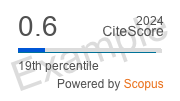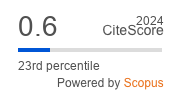Heart rhythm and conduction disorders as manifestations of cardiotoxicity of anticancer treatment: myth or reality?
https://doi.org/10.29001/2073-8552-2020-35-1-13-21
Abstract
About the Authors
Yu. A. VasyukRussian Federation
Dr. Sci. (Med.), Professor, Head of the Department of Hospital Therapy No. 1
20/1, Delegatskaya str., Moscow, 117473, Russian Federation
E. Y. Shupenina
Russian Federation
Cand. Sci. (Med.), Assistant Professor, Department of Clinical Functional Diagnostics
20/1, Delegatskaya str., Moscow, 117473, Russian Federation
E. O. Novosel
Russian Federation
Medical Resident, Department of Hospital Therapy No. 1
20/1, Delegatskaya str., Moscow, 117473, Russian Federation
I. S. Agapov
Russian Federation
Medical Resident, Department of Hospital Therapy No. 1
20/1, Delegatskaya str., Moscow, 117473, Russian Federation
References
1. Vasyuk Y.A., Yushchuk E.N., Nesvetov V.V. Cardiooncology: a new challenge of our time. Cardiovascular complications of antitumor treatment. Moscow: KlinmedConsulting; 2019:100 (In Russ.).
2. Zamorano J., Lancellotti P., Munoz D., Aboyans V., Asteggiano R., Galderisi M. et al. 2016 ESC Position Paper on cancer treatments and cardiovascular toxicity developed under the auspices of the ESC Committee for Practice Guidelines. Eur. Heart J. 2016;37(36):2768–2801. DOI: 10.1093/eurheartj/ehw211.
3. Todaro M., Oreto L., Qamar R., Paterick T., Carerj S., Khandheria B. Cardioncology: state of the heart. Int. J. Cardiol. 2013;168:680–687.
4. Bhave M., Akhter N., Rosen S. Cardiovascular toxicity of biologic agents for cancer therapy. Oncology (Williston Park). 2014;28(6):482–490.
5. Bowles E., Wellman R., Feigelson H., Onitilo A., Freedman A., Delate T. et al. Pharmacovigilance Study Team. Risk of heart failure in breast cancer patients after anthracycline and trastuzumab treatment: a retrospective cohort study. J. Natl. Cancer Inst. 2012;104(17):1293–1305. DOI: 10.1093/jnci/djs317.
6. Yang X., Li X., Yuan M., Tian C., Yang Y., Wang X. et al. Anticancer therapy-induced atrial fibrillation: electrophysiology and related mechanisms. Front. Pharmacol. 2018;9:1058. DOI: 10.3389/fphar.2018.01058.
7. Varga Z.V., Ferdinandy P., Liaudet L., Pacher P. Drug-induced mitochondrial dysfunction and cardiotoxicity. Am. J. Phys. Heart Circ. Phys. 2015;309(9):1453–1467. DOI: 10.1152/ajpheart.00554.2015.
8. Liu Y., Tan D., Shi L., Liu X., Zhang Y., Tong C. et al. Blueberry anthocyanins enriched extracts attenuate cyclophosphamide-induced cardiac injury. PLoS One. 2015;10(7):e0127813. DOI: 10.1371/journal.pone.0127813.
9. Martinello R., Becco P., Vici P., Airoldi M., Del Mastro L., Garrone O. et al. Trastuzumab-related cardiotoxicity in patients with nonlimiting cardiac comorbidity. Breast J. 2019;25(3):444–449. DOI: 10.1111/tbj.13240.
10. Yuan M., Tse G., Zhang Z., Han X., Wu W.K.K., Li G. et al. The incidence of atrial fibrillation with trastuzumab treatment: A systematic review and meta-analysis. Cardiovasc. Ther. 2018;36(6):e12475. DOI: 10.1111/1755-5922.12475.
11. Wang S.Y., Long J.B., Hurria A., Owusu C., Steingart R.M., Gross C.P. et al. Cardiovascular events, early discontinuation of trastuzumab, and their impact on survival. Breast Cancer Res. Treat. 2014;146(2):411–419. DOI: 10.1007/s10549-014-3029-0.
12. Farmakis D., Parissis J., Filippatos G. Insights into onco-cardiology: atrial fibrillation in cancer. JACC. 2014;63(10):945–953. DOI: 10.1016/j.jacc.2013.11.026.
13. Lenihan D.J., Kowey P.R. Overview and management of cardiac adverse events associated with tyrosine kinase inhibitors. Oncologist. 2013;18(8):900–908. DOI: 10.1634/theoncologist.2012-0466.
14. Veronese P., Hachul D., Scanavacca M., Hajjar L., Wu T., Sacilotto L. et al. Effects of anthracycline, cyclophosphamide and taxane chemotherapy on QTc measurements in patients with breast cancer. PLoS One. 2018;13(5):e0196763. DOI: 10.1371/journal.pone.0196763.
15. Liu Y., Liu Y., Fan Z.W., Li J., Xu G.G. Meta-analysis of the risks of hypertension and QTc prolongation in patients with advanced non-small cell lung cancer who were receiving vandetanib. Eur. J. Clin. Pharmacol. 2015;71(5):541–547. DOI: 10.1007/s00228-015-1831-1.
16. Han J.Y., Lee S.H., Lee G.K., Yun T., Lee Y.J., Hwang K.H. et al. Phase I/II study of gefitinib (IressaR) and vorinostat (IVORI) in previously treated patients with advanced non-small cell lung cancer. Cancer Chemother. Pharmacol. 2015;75(3):475–483. DOI: 10.1007/s00280-014-2664-9.
17. O’Connor O.A., Horwitz S., Masszi T., Van Hoof A., Brown P., Doorduijn J. et al. Belinostat in patients with relapsed or refractoryperipheral T-cell lymphoma: results of the pivotal phase II BELIEF (CLN-19) Study. J. Clin. Oncol. 2015;33(23):2492–2499. DOI: 10.1200/JCO.2014.59.2782.
18. Tisdale J. Drug-induced QT interval prolongation and torsades de pointes: role of the pharmacist in risk assessment, prevention and management. Can. Pharm. J. (Ott). 2016;149(3):139–152. DOI: 10.1177/1715163516641136.
19. Porta-Sanchez A., Gilbert C., Spears D., Amir E., Chan J., Nanthakumar K. et al. Incidence, Diagnosis, and Management of QT Prolongation Induced by Cancer Therapies: A Systematic Review. J. Am. Heart Assoc. 2017;6(12):e07724. DOI: 10.1161/JAHA.117.007724.
20. Fradley M., Viganego F., Kip K., Martin A., Patel A., Ismail-Khan R. et al. Rates and risk of arrhythmias in cancer survivors with chemotherapy-induced cardiomyopathy compared with patients with other cardiomyopathies. Open Heart. 2017;4(2):e000701. DOI: 10.1136/openhrt-2017-000701.
21. Kilickap S., Barista I., Akgul E., Ytemir K., Aksoy S., Tekuzman G. Early and late arrhythmogenic effects of doxorubicin. South. Med. J. 2007;100:262–265. DOI: 10.1097/01.smj.0000257382.89910.fe.
22. Lynch D., Washam J., Newby L. QT interval prolongation and torsades de pointes in a patient undergoing treatment with vorinostat: a case report and review of the literature. Cardiol. J. 2012;19(4):434–438.
23. Rowinsky E., Eisenhauer E., Chaudhry V., Arbuck S.G., Donehower R. Clinical toxicities encountered with paclitaxel (Taxol). Semin. Oncol. 1993;20(4):1–15.
24. Osman M., Elkady M. A Prospective Study to Evaluate the Effect of Paclitaxel on Cardiac Ejection Fraction. Breast Care. 2017;12(4):255–259. DOI: 10.1159/000471759.
25. Wheeler D., Liew T., Bailey A. Peri-operative atrioventricular block as a result of chemotherapy with epirubicin and paclitaxel. Anaesthesia. 2007;62(2):186–189. DOI: 10.1111/j.1365-2044.2006.04946.x.
26. Katsume Y., Isawa T., Toi Y., Fukuda R., Kondo Y., Sugawara S. et al. Complete atrioventricular block associated with pembrolizumab-induced acute myocarditis: the need for close cardiac monitoring. Intern. Med. 2018;57(21):3157–3162. DOI: 10.2169/internalmedicine.0255-17.
27. Moses H., Matheson D.H., Cairns-Smith S., George B.P., Palisch C., Dorsey E.R. The anatomy of medical research: US and international comparisons. JAMA. 2015;313(2):174–189. DOI: 10.1001/jama.2014.15939.
28. Ferri N., Siegl P., Corsini A., Нerrmann J., Lerman A., Benghozi R. Drug attrition during pre-clinical and clinical development: understanding and managing drug-induced cardiotoxicity. Pharmacol. Ther. 2013;138(3):470–484. DOI: 10.1016/j.pharmthera.2013.03.005.
29. Fleissig A.J.V., Jenkins V., Catt S., Fallowfield L. Multidisciplinary teams in cancer care: are they effective in the UK. Lancet Oncol. 2006;7:935–943. DOI: 10.1016/S1470-2045(06)70940-8.
Review
For citations:
Vasyuk Yu.A., Shupenina E.Y., Novosel E.O., Agapov I.S. Heart rhythm and conduction disorders as manifestations of cardiotoxicity of anticancer treatment: myth or reality? Siberian Journal of Clinical and Experimental Medicine. 2020;35(1):13-21. (In Russ.) https://doi.org/10.29001/2073-8552-2020-35-1-13-21





.png)





























